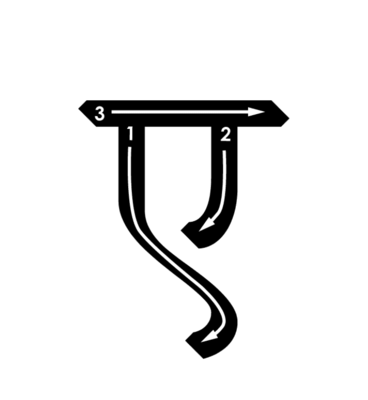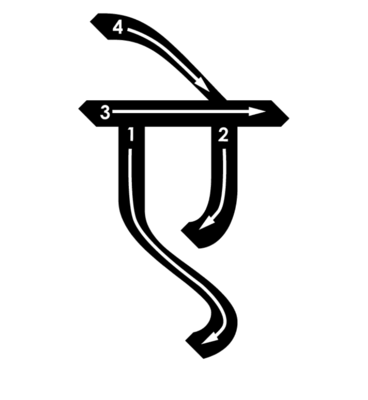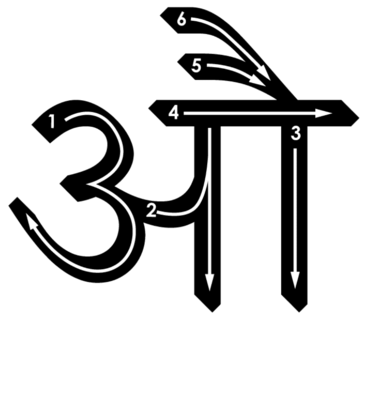Spelling
- Draw a bow with a slight curve from the top left down to the middle.
- Draw a short line curved to the left next to it on the right.
- Draw the horizontal line from left to right over the letter.
Pronunciation
- a long e as in Esel, Kehle
- place of articulation: from the throat (guttural) to the palate (palatal) (vibrating)
Schreibweise
- Draw a bow with a slight curve from the top left down to the middle.
- Draw a short line curved to the left next to it on the right.
- Draw the horizontal line from left to right over the letter.
- Above this line, draw a short line from the top left to the starting point of the vertical line on the right (2).
Pronunciation
- a long ai as in Keim, Eins
- place of articulation: from the throat (guttural) to the palate (palatal) (vibrating)
Spelling
- Start on the top left with two sweeping downward bows shaped like the figure "3".
- Start again where the two bows meet and draw another bow to the top right, followed immediately by a vertical line down.
- Place another vertical line from top to bottom next to it on the right.
- Draw the horizontal line from left to right over the letter. Make sure that this line covers only the two vertical lines.
- Now draw a short line above it, from centre top to the starting point of the right vertical line (3).
Pronunciation
- a long o as in Kohle, Oma
- place of articulation: from the throat (guttural) to the lips (labial) (vibrating)
Schreibweise
- Start on the top left with two sweeping downward bows shaped like the figure "3".
- Start again where the two bows meet and draw another bow to the top right, followed immediately by a vertical line down.
- Place another vertical line from top to bottom next to it on the right.
- Draw the horizontal line from left to right over the letter. Make sure that this line covers only the two vertical lines.
- Now draw a short line above it, from centre top to the starting point of the right vertical line (3).
- Draw yet another short line above it. This line also ends at the starting point of the vertical line on right (3).
Pronunciation
- a long au as in Kraut, blau
- place of articulation: from the throat (guttural) to the lips (labial) (vibrating)
Linked umlauts
The letters described above are only used at the beginning of words. Within words, the umlaut is linked directly to the preceding consonant. Example: क / ka:
- के / ke: for the "e", a diagonal line is placed on top of the क / ka
- कै / kai: compare the similarity to के / ke
- को / ko: compare the similarity to के / ke
- कौ / kau: compare the similarity to को / ko
Vowel modifications
- Anusvāra: saṁśaya - संशय (doubt) -> a dot above the sa / स
- Visarga: vṛttayaḥ - वृत्तयः (blur, clouding) -> two dots after the ya / य
- Virāma: vairāgyam - वैराग्यम् (serenity) -> small diagonal line under the ma / म




